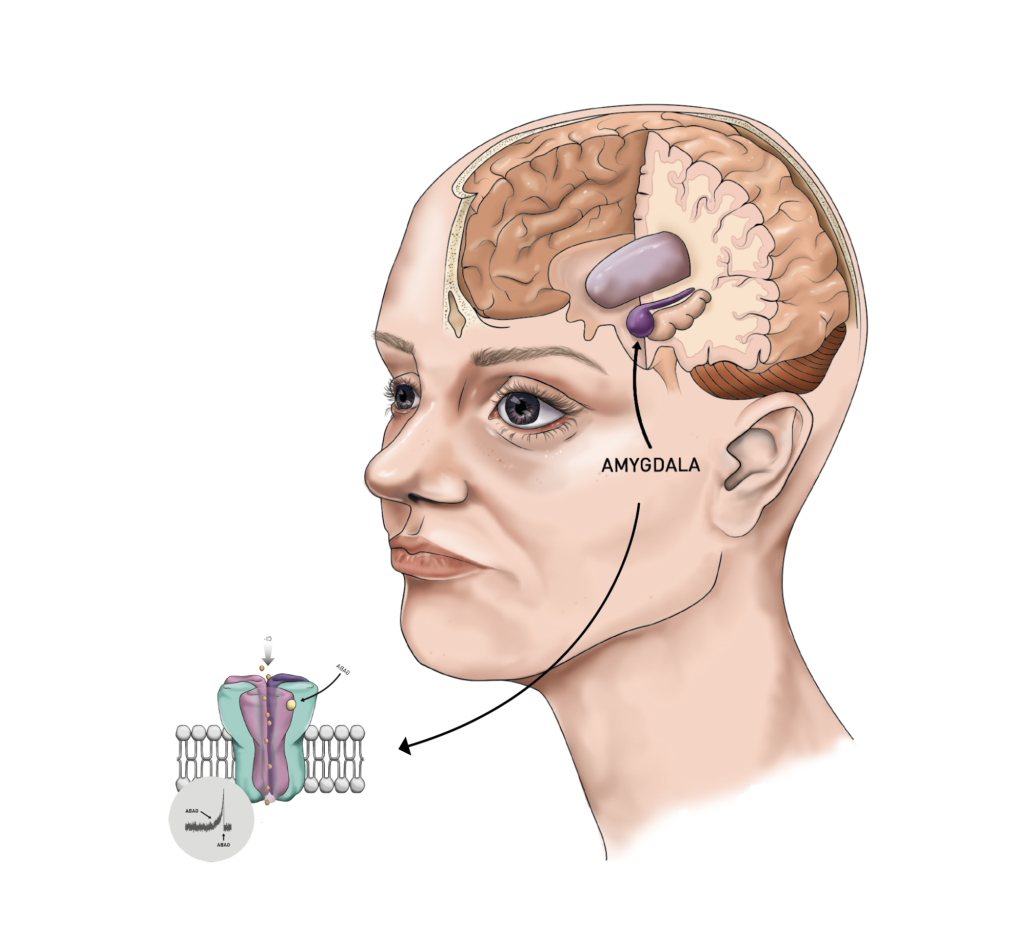ALLOPREGNANOLONE AND OCD
Professor Marco Bortolato, Faculty of Pharmacology and Toxicology at the University of Utah
A potent new substance – one of the brains’ most powerful neurotransmitters – has now been proven to play an important role in exacerbating compulsion and compulsive symptoms, in a series of influential studies from the University of Utah Dept of Pharmacology and Toxicology.
It is called Allopregnanolone (or ALLO), and it is the most potent neurosteroid within the brain’s GABA-A receptors, its principal ‘brake system’.

AMYGDALA. The amygdala plays a crucial role in processing emotional responses. Inside the amygdala, neurons use the neurotransmitter GABA (gamma-aminobutyric acid) to modulate feelings such as fear, anxiety and aggression. The GABA system is the brain’s primary inhibitory neurotransmitter.
ALLO: The evidence
For most of us ALLO reduces stress and anxiety. Increases in production have long been observed during high-stress situations. For a significant minority though, it has the opposite effect. For them, increasing ALLO levels trigger increased anxiety, mood swings and, for many, compulsion.
In a series of studies, new preclinical and clinical evidence from the Dept of Pharmacology and Toxicology at the University of Utah now clearly demonstrates a connection between elevated ALLO levels, and compulsive, tic-like symptoms. And, how those symptoms are reduced with the administration of isoallopregnanolone – the neurosteroid the body produces naturally to modulate and inhibit ALLO and its negative effects.
THE CASE FOR ALLO...
The first study, carried out by Professor Marco Bortolato, Dept of Pharmacology and Toxicology at the University of Utah, demonstrated the connection between increased ALLO levels and worsening compulsion in a human study where ALLO production was blocked with the steroid androgen Finasteride (1) – significantly reducing tics and compulsions in patients with OCD.
Further preclinical research carried out by Prof. Bortolato’s team produced compelling data from two important OCD animal models, the D1CT-7 transgenic mouse model (2) and an autopsy-based CIN depletion model (3). In both models OCD-like behavior was exhibited when ALLO levels were increased.


...AND SEPRANOLONE
In both animal models isoallopregnanolone, the endogenous neurosteroid which modulates and inhibits ALLO, was also administered. In both cases it significantly alleviated ALLO-induced compulsions.
Isoallopregnanolone also exists as Sepranolone—Asarina Pharma’s patented, chemically identical version of the compound. Sepranolone has been trialed extensively already, revealing no serious side effects…